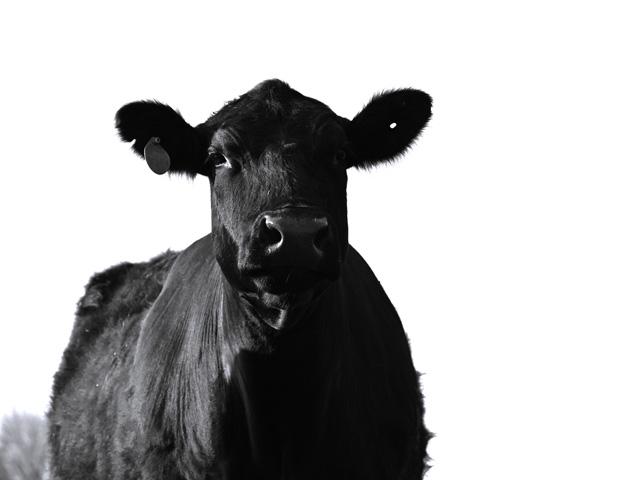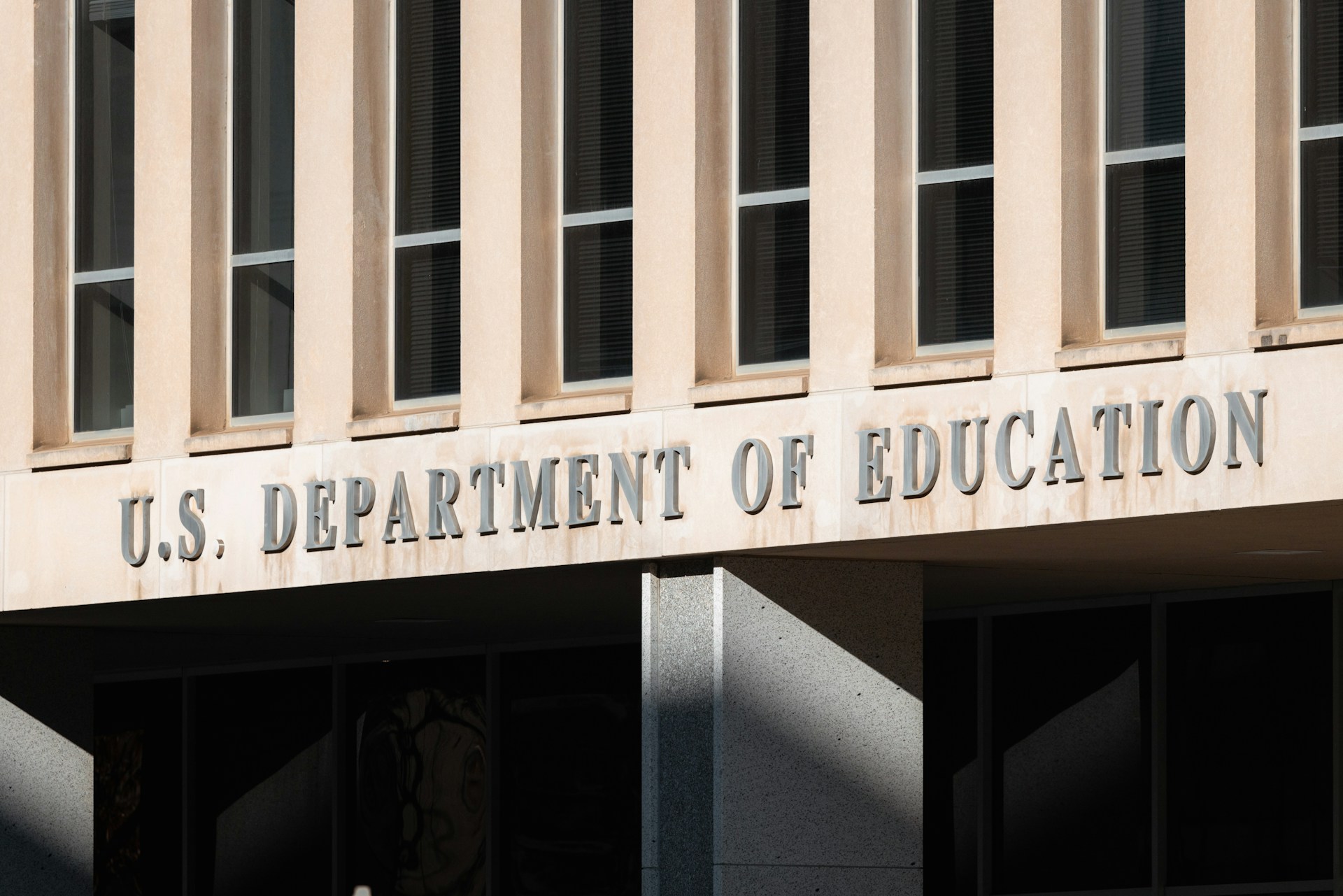
New Study from Kong Highlights Rising Threat of AI-Enhanced Security Attacks Telecom Reseller
source

A bearish sentiment dominated the futures oil market to start the week Monday after last week's gains due to mixed data from China confirming…
Barney Bahrenfuse and Suzanne Castello, who farm near Grinnell, Iowa, are recipients of Practical Farmers of Iowa's 2025 Sustainable Achievement…
Editor’s Note: This story, originally published Dec. 13, was updated with comments from U.S. Chief Veterinary Officer Rosemary Sifford at 2:38 p.m. Dec. 14.
**
REDFIELD, Iowa (DTN) — Keeping New World screwworm (NWS) out of the United States is a priority for USDA’s Animal and Plant Health Inspection Service (APHIS). APHIS announced $165 million in emergency funding has been secured from the Commodity Credit Corporation to protect the country’s livestock and other animals.
On Nov. 22, the Chief Veterinary Officer of Mexico notified APHIS of a positive NWS detection in a cow in extreme southern Mexico. During the past two years, NWS has spread throughout Panama, Costa Rica, Nicaragua, Honduras and Guatemala.
Given the severity of the threat from NWS, APHIS restricted the importation of animal commodities, including live cattle, from or transiting through Mexico following the notification.
In a statement to DTN on Dec. 13, U.S. Chief Veterinary Officer Rosemary Sifford said that upon detection of New World screwworm (NWS) in Mexico on Nov. 22, USDA suspended trade in cattle from Mexico pending implementation of an enhanced protocol to ensure they are free from NWS prior to entering the U.S.
“Several media outlets are reporting that imports of live cattle and bison will resume before the holidays,” she said. “While the U.S. continues to work very closely with Mexico and has agreed to protocols, it will take some time to implement these due to multiple steps needed to resume trade, including facility inspections and approval.
“APHIS does not expect this to happen before the holidays, and shipments will likely resume incrementally after the New Year, with full resumption of live animal movements sometime after that,” she said.
Protecting American livestock from foreign pests is a top priority, and APHIS will only approve these measures when confident the threat of NWS crossing the border has been mitigated, she noted. APHIS will then announce when trade resumes.
FUNDS WILL HELP PREVENT THE SPREAD
Friday’s funding announced will help USDA work with Mexico and Central America to stop the spread of NWS farther north through Mexico and protect the U.S. through surveillance, animal health checkpoints and domestic preparedness. This will also help reestablish a biological barrier in Panama and eradicate NWS from the affected areas in Mexico and Central America.
“The current outbreaks in Central America demonstrate the need for USDA to increase its investment in NWS eradication and prevention,” USDA Under Secretary for Marketing and Regulatory Programs Jenny Lester Moffitt said in a news release.
“If NWS were to spread to the United States, it would result in significant economic losses and threats to animal health and welfare. This funding will allow for a coordinated emergency response to control the outbreak and prevent NWS from spreading to the United States,” she said.
LOOK FOR SYMPTOMS IN ANIMALS
NWS are fly larvae that infest living tissue of warm-blooded animals, causing infection. According to APHIS, the maggots will burrow into a wound, feeding as they go and causing extensive damage by tearing the host’s tissue with sharp mouth hooks. The wound becomes larger and deeper. NWS can cause serious, even deadly damage to the animal.
The adult screwworm flies are about the size of a common housefly with orange eyes, a metallic blue or green body, and three dark stripes along their backs.
Affected mammals and birds show signs of irritated behavior, head shaking, smell of decay, evidence of fly strike and presence of fly larvae in wounds.
APHIS says the best prevention of NWS in the U.S. is by avoiding infestation. Be alert for symptoms in pets and livestock, ensure that pets traveling internationally are inspected for screwworm, and check your vehicle for screwworm flies if in an NWS-infested area. Producers should notify herd veterinarians immediately if symptoms are seen.
Eradicating NWS is only possible through sterile insect technique. Iowa’s state entomologist Robin Pruisner told DTN the logistics and efficacy of releasing sterile male NWS works well, and the process has been used previously in the U.S. to eradicate the problem.
“The sterile insect technique (SIT) involves sterilizing millions of male insects using ionizing radiation before releasing them into the wild to mate with wild females,” she said. “As no offspring can be produced, the SIT leads to drastic reduction in the wild populations of the disease carrier while minimizing the use of pesticides.”
Since females only mate once, this helps eliminate the population. The SIT process has been used in Latin America this year.
Jennifer Carrico can be reached at jennifer.carrico@dtn.com
Follow her on social platform X @JennCattleGal
(c) Copyright 2024 DTN, LLC. All rights reserved.
Please correct the following errors and try again:
Please correct the following errors and try again:

19

Want the latest defense industry news? Sign up for the Breaking Defense newsletter.
Airman First Class Emily Albright (center) prepares to set chocks around Air Force One’s landing gear Thursday, Jan. 30, 2014. (U.S. Air National Guard photo by 1st Lt. Nathan T. Wallin/Released)
WASHINGTON — Boeing’s troubled project to provide two new Air Force One jets is facing new delays, likely pushing the delivery of the first jet out to 2029 or even later, a source told Breaking Defense.
The Air Force is still working to validate the schedule for when Boeing can deliver the militarized jumbo jets, meaning they might arrive even later than 2029, according to the source, who requested anonymity to share non-public information.
“It’s an honor to be entrusted with this responsibility and we take pride in this work,” Boeing said in a statement. “Our focus is on delivering two exceptional Air Force One airplanes for the country.”
Negotiated under the previous Trump administration, the Air Force One deal has proved painful for Boeing amid massive headwinds, including over $2 billion in losses and years of delays. The jet’s first flight was last scheduled for March 2026, Breaking Defense previously reported, a setback of an additional 16 months. The Wall Street Journal first reported the new delivery date.
An Air Force spokesperson told Breaking Defense that Boeing is expected to provide a new master schedule in the spring. Once that’s delivered, the Air Force will then “conduct a schedule risk assessment to inform establishing revised” dates for key milestones, such as when the aircraft could be operational.
Officials expected the program to be about two-to-three years late under the revised 2022 schedule, which set the delivery of the first jet for September 2026 but with a year of schedule margin. The second was set to be delivered in February 2027, also with a full year of wiggle room. It’s not clear specifically when the jets would arrive under a revised plan.
Boeing has faced a slew of challenges refurbishing the two 747s under contract for the program, ranging from supply chain to workforce. The new lags mean President-elect Donald Trump — who personally intervened in negotiations for the two jets — likely won’t be able to fly on a new Air Force One before his second term concludes. The first jet was originally expected this year.
Trump’s return to the White House could also change the aircraft’s design once again, from a white and light-blue hue to his original preference for white, red and dark blue, Politico previously reported. The Air Force spokesperson told Breaking Defense that the aircraft’s “livery options” were finalized last year.
Improved UX and UI can enable smarter use of AI and automation, helping warfighters manage data-rich environments and make faster, more informed decisions.
Improved UX and UI can enable smarter use of AI and automation, helping warfighters manage data-rich environments and make faster, more informed decisions.
The recent Defense Tech Summit in Tel Aviv focused on counter-drone systems, medial tech and, of course, AI.
By Seth J. Frantzman
Topics: Air Force, Air Force One, Boeing, Donald Trump, white house
Drones, high-speed cruise missiles, and ballistic missiles attacking together from 360° creates complexity only certain radars can handle.
Drones, high-speed cruise missiles, and ballistic missiles attacking together from 360° creates complexity only certain radars can handle.
When it comes to a common operating picture, not everyone needs the same equipment. What they need is the same situational awareness.
When it comes to a common operating picture, not everyone needs the same equipment. What they need is the same situational awareness.
Sign up and get Breaking Defense news in your inbox.
In the fourth video in our CCA series, Breaking Defense looks in the details for the future fleet. For the full CCA video series click here.
In the fourth video in our CCA series, Breaking Defense looks in the details for the future fleet. For the full CCA video series click here.
Want the latest defense industry news? Sign up for the Breaking Defense newsletter.
Copyright © 2024 Breaking Media, Inc. All rights reserved. Registration or use of this site constitutes acceptance of our Terms of Service and Privacy Policy.
Privacy Center | Do not sell my information


Thanks to the support of 380,000+ grassroots patriots, Turning Point USA reaches and impacts millions of students on campus and online. Please consider joining our cause with a tax deductible gift today!
15 minutes ago
Anti-Israel Convention in Chicago Offers College Students Tips on Making Campuses More “Palestinian”
2 days ago
Washington State Proposes Third Gender Category for High School Sports to Address Transgender Athlete Concerns
3 days ago
Mystery Drones Spotted Over New Jersey
3 days ago

December 16th, 2024 by Justin Melillo 
The sixth race of the 2024-25 World of Outlaws Pro Series season, powered by iRacing, takes to Knoxville Raceway on Monday night in the 410 Sprint Cars.
This top-level eSports dirt racing series combines a schedule of 10 tracks with two dirt oval disciplines—the series utilizes both the 410 Sprint Car and the Super Late Model—and with an open qualifying series format to allow for anyone to take part in the championship, the new Pro Series has different look than what we’ve seen in past World of Outlaws eSports championships. The last race on the 2024 side of the calendar, Knoxville Raceway will host Sprint Cars around the Sprint Car Capital of the World as the second half of the season begins.
The driver roster is set each week through the Qualifying Series races that are open to all iRacing members with a Class A Dirt Oval license. These qualifying races will run on Tuesdays, Wednesdays, and Thursdays at 8:00 p.m. ET, and the top-35 point scorers will be invited to the iRacing World of Outlaws Pro Series league each week for the Monday night main event. After the Monday show, the league is cleared out, and the process begins again. Points will be tracked as normal across those 10 main events to crown the series champion.
The main event will include a 35-lap feature for 21 cars that qualify in through qualifying, heat races, and last chance qualifiers. The action starts at 8:00 p.m. ET and it will be live on DIRTVision and across all of iRacing’s social media channels.
The following 35 drivers have qualified into Monday night’s event at Knoxville Raceway, utilizing the Sprint Car, by scoring the most points last week during the qualifying races:
We had a “New” winner in the series last week at Federated Auto Parts at I-55 Raceway on Monday night. Conner New, in his second career World of Outlaws Pro Series start, won in a photo finish against former champion Blake Matjoulis after a late race restart bunched the field back together for the final six laps. Matjoulis was hugging the wall on the bottom as New ripped the top lane. Off of the final corner on the final lap, they came together, and across the line, New had it won by just a corner of his front bumper.
Knoxville Raceway hosted the final race on the 2023 side of the 2023-24 iRacing World of Outlaws Sprint Car calendar, and when the dust cleared at the Sprint Car Capital of the World, multi-time iRacing World of Outlaws champion Alex Bergeron stood tall as he returned to victory lane in dominant fashion.
The Late Models also ran at Knoxville last season, in August, and it was Logan Rumsey who scored the win.
Based on the Marion County Fairgrounds in Knoxville, Iowa, Knoxville Raceway is known as the “Sprint Car Capital of the World.” Besides its premier event, the Knoxville Nationals, the track has also been home to the National Sprint Car Hall of Fame & Museum since 1992. The Knoxville Nationals pay out more than $1 million to competitors, with $175,000 of that reserved for the A-Main winner.
These races feature qualifying and heat racing to determine the 21 drivers that will compete in the main race.
The top-eight qualifiers will immediately transfer to the feature. Pole winners score 25 points, second place scores 23 points, and points are paid out through the transfer spots to eighth, who will receive 17 points. When the feature begins, the top-eight will invert, with the pole sitter starting eighth and the eighth place qualifier starting on the pole.
For everyone else who does not qualify in, there will be three heat races of eight laps each, where the top-three finishers will advance forward through to the main event. Heat races also pay out points to all drivers, with the winner scoring 15 points and ninth place taking home seven points.
There will also be two 12-lap consolation races where the top two finishers in each will move on, but no additional points are scored.
Feature races will be 35 laps in the 410 Sprint Car, or 50 laps in the Super Late Model. The Feature winner will score 100 points, making the maximum amount of points on any given night 125 for a pole and Feature win.
6. Knoxville Raceway | Dec 16, 2024 | 410S
–HOLIDAY BREAK–
7. TO BE ANNOUNCED | Jan 06, 2025 | 410S
8. Fairbury Speedway | Jan 13, 2025 | SLM
9. Eldora Speedway | Jan 20, 2025 | 410S
10. The Dirt Track at Charlotte | Jan 27, 2025 | SLM
For more information on the series, visit www.iracing.com/woo-pro-series. For more information on the World of Outlaws, visit www.worldofoutlaws.com. For more information on iRacing and for special offers, visit www.iracing.com.
Interested in special offers, free giveaways, and news?
Stay In Touch
These cookies gather data on how visitors use this website – which pages are visited most often, for example.
We use analytics to determine how users use our website and look for opportunities within these datasets to improve our site design.
These cookies remember website preferences and generally improve the performance of the site for the user.
This is an internally generated cookie that we use to hide our SMS form if our users have signed up or indicated they are not interested receiving SMS notifications. It is there to improve your site experience by saving your preferences.
These cookies are used to provide a customized experience and can be used to provide targeted ads through advertising networks.
We use this pixel to run digital marketing campaigns across other websites. This basically just lets us know you are interested in iRacing!
We use this cookie to see what our users do after they click on an ad. This helps us understand how effective our marketing campaigns are in leading to product purchases.
This is the code that allows HubSpot to track your activity, including pages visited, CTAs clicked, forms filled, traffic sources.
We use cookies to improve your site experience. Customize your cookie preferences below.
Copyright © 2024 iRacing.com Motorsport Simulations, LLC. All Rights Reserved.

A strain now circulating in dairy cows appears to carry little risk for humans at present, but we need to develop an effective strategy before it mutates
As usual, I’m back with cheery topics to get us through the dark, cold winter months. No, I’m not talking about the studies on how dark chocolate reduces your risk of type 2 diabetes or why eating cake for breakfast isn’t as bad as we think it is. Instead, in the global health world, the main news is about avian flu, the H5N1 virus, and also the deadly outbreak in the Democratic Republic of the Congo of a mystery illness. It’s in these moments that I wonder why I didn’t choose a career in baking.
But trying to replicate a Mary Berry recipe would require eggs – and the United States is facing a shortage of eggs – like Britain did last year – with the main culprit being avian flu, which has either killed off or triggered the culling of hundreds of thousands of chickens. Avian flu has caused concerns recently given several step-changes in the seriousness of the potential threat: becoming endemic in wild bird populations; then its spread among domestic birds, causing a turkey lockdown in winter 2022; then reports from across the world about infections in mammals such as sea lions that feed on or live near wild birds. In the past year, a big shift has been the confirmation of mammal-to-mammal transmission among dairy cows in the US.
The growing proximity of the virus to humans has resulted in an increasing number of infections in humans in the past year (bird-to-human or cow-to-human), but H5N1 can still not transmit human-to-human the way Sars-Cov-2 or seasonal influenza can, which is why it’s considered low-risk. However, a recent Science article noted that the strain in cows would only require a single mutation to enable the virus to move from avian to human specificity. This is the shift that would trigger governments to activate their pandemic preparedness and response plans and would make it leap to the top of risk registers.
But there are even more puzzles when looking at H5N1. Prior to this year, the death rate was estimated to be about 50%, and it’s still deadly for many species of birds and cats. But out of the 57 confirmed infections in the US in the past year, all have been mild and none hospitalised. Scientists don’t fully understand why, although there are hypotheses: could the strain circulating in dairy cows (and causing human infections in the US) be less dangerous to human health? Or is it about the route of transmission from cows to humans, or some existing immunity in the population? It’s worth contrasting this with a teenager in Canada who was infected with H5N1 from wild birds (a different strain to the one in cows), and was admitted to hospital with severe pneumonia, where he remains on a ventilator.
Looking forward, it wouldn’t be wise to just assume it won’t further mutate or will be a mild strain. If I worked in a government health department, I would be preparing plans for how best to respond to more avian flu cases in humans, including GP and hospital guidance, vaccine and antiviral testing and stockpiling and containment plans.
First, we need to continue to detect cases, which requires a testing strategy and adequate diagnostics. Sequencing positive samples can tell us where someone got infected, the strain they have and how infectious transmission is. Currently, the UK has a detection strategy for high-risk workers and in hospitals. In the first part, samples are taken randomly through nose and throat swabs for those working closely with birds on poultry farms, for example, to identify asymptomatic cases and ensure we’re not having undetected spread. In the second part, NHS hospitals ensure those admitted to intensive care with severe respiratory infections or influenza-like symptoms are tested for avian flu, if seasonal influenza is not found.
We must also prepare medical countermeasures such as vaccines and antivirals such as Tamiflu. We are fortunate to have an approved vaccine, which has been previously used for those working on a mink farm in Finland, and the UK has stockpiled 5m doses. While it’s useful to have a generic H5N1 vaccine ready to go, it wouldn’t be specific to the strain circulating. On an avian flu briefing several months ago, a senior director from the Centers for Disease Control and Prevention noted that the US was waiting to stockpile vaccines so that they could match the circulating strain most precisely, if needed. But producing enough vaccines rapidly would be a problem given that H5N1 vaccines are currently made in eggs, which are dependent on healthy chickens. The US government spends millions of dollars on contracts with poultry companies for eggs, kept ready for vaccine production. These chickens are kept in secret locations and protected by both physical and biosecurity measures to ensure the egg supply is secure. It’s estimated to take at least six months from the arrival of an egg to an approved vaccine, making emergency scale-up tricky.
In addition, we need a clear strategy over the management of spread. If the circulating strain is indeed mild in humans, would officials tolerate spread while vaccinating in high-risk groups? What if it’s more serious in humans, and young people and especially children become seriously ill? What if hospitals become overwhelmed? In this case, what is the plan to contain and delay until vaccination? How do we build trust in yet another vaccination campaign? It’s better to pre-empt these questions and prepare plans that help decision-making in a logistical and balanced fashion.
For now, unless you’re a scientist working in this area, a health or agricultural official, a farm worker or in close proximity to animals, or you consume raw milk or undercook meat (which is a bad idea anyway), it’s not yet a major concern. But if the picture changes further, we won’t be able to avoid the topic. For now, you can get back to your Christmas baking and those precious eggs.
Prof Devi Sridhar is chair of global public health at the University of Edinburgh